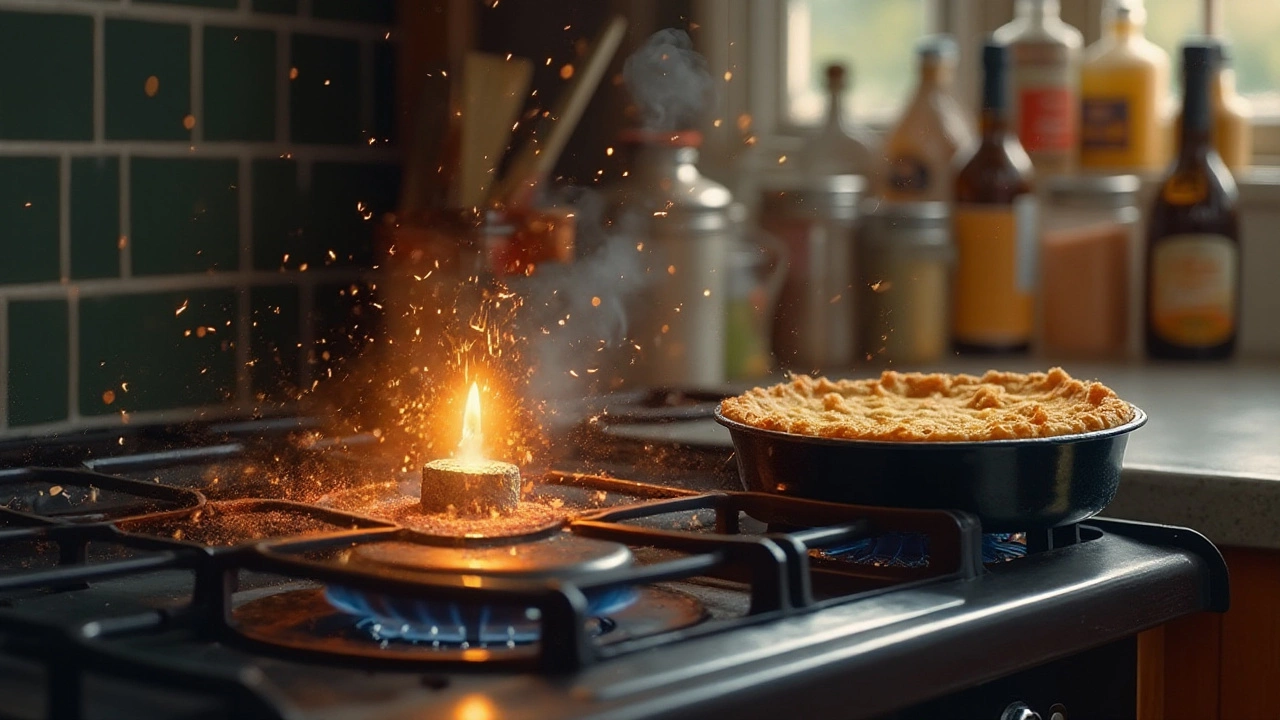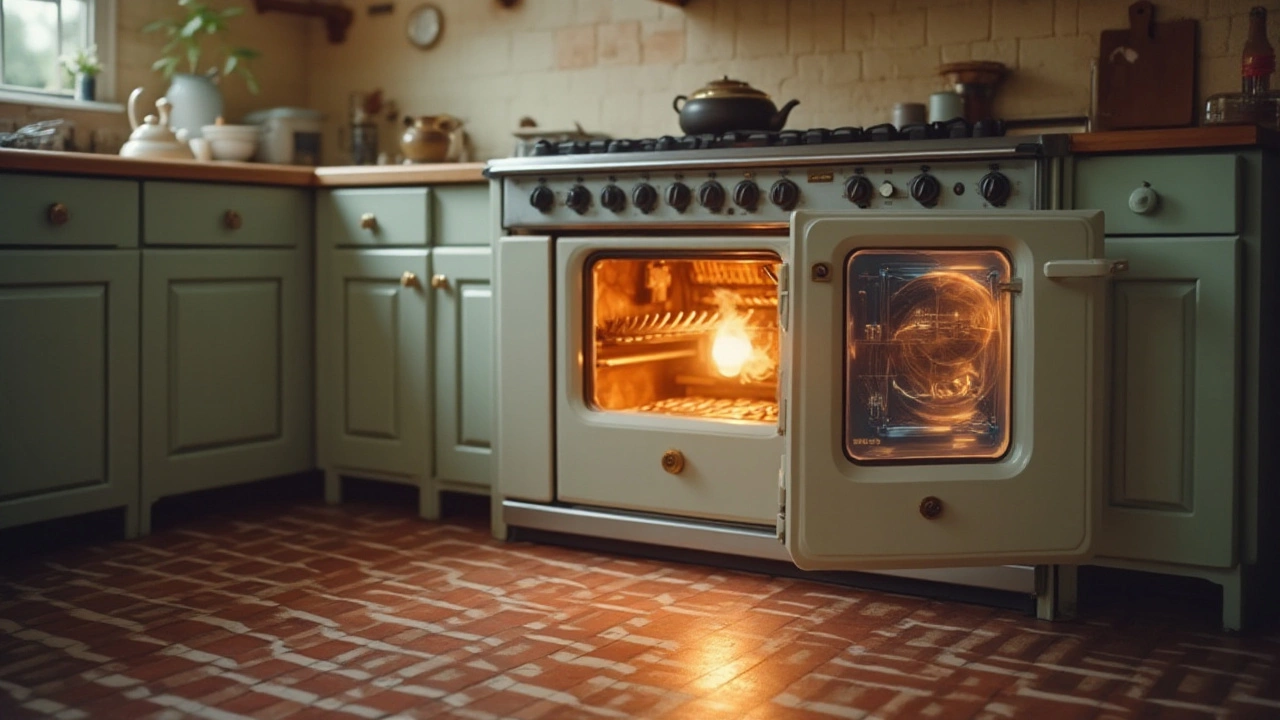Your oven, a trusty culinary companion, sometimes faces hiccups that can disrupt your cooking adventures. One subtle yet significant issue could be a faulty igniter. Recognizing the tell-tale signs early can save you time, effort, and maybe even a few sanity points.
Before jumping to conclusions, it's essential to know what you're dealing with. An inconsistent flame, or perhaps a noticeable delay in heating, might be whispering the truth about your oven igniter. No need to panic just yet; there are practical steps and advice you can follow, which could spare you from immediate costly repairs or replacements.
This deep dive into gas oven igniter symptoms will guide you through understanding and diagnosing the causes of the problem. Let's arm you with the knowledge you need to keep your cooking space running smoothly. So, before you dial up the repair number, explore these insights to see how you might improve your situation effectively.
- Common Symptoms of a Bad Gas Oven Igniter
- Causes Behind a Faulty Igniter
- DIY Troubleshooting Tips
- When to Call a Professional
- Maintaining Your Oven's Igniter
Common Symptoms of a Bad Gas Oven Igniter
Imagine you're on the brink of baking a scrumptious pie or roasting a perfect chicken. You turn on your oven and wait, yet the familiar whoosh of the burner lighting just doesn’t happen. This frustrating scenario often points to an ailing gas oven igniter. Without this tiny but mighty component working correctly, your oven's vitality takes a nosedive. One prominent symptom is a persistent clicking sound. When functioning well, the igniter quietly signals the gas valve to open as it fires up, resulting in that satisfying, gentle whoosh. However, if it struggles, all you hear is a relentless click that goes on for more than a few seconds.
An impaired igniter often leaves your food more underdone than you’d like. This imperfect cooking – like a half-baked cake or a chicken that's nowhere near golden brown – usually pinpoints straight to heat issues stemming from the igniter. It fails to ignite the gas properly, leaving your oven gasping for the consistency it should naturally offer. Timing delays are another glaring symptom. A functioning igniter should heat up and glow brightly within roughly 90 seconds. If you note a lag beyond this, your igniter might be faltering.
A less obvious but equally telling sign involves observing the igniter itself. When you peek at it during operation, a healthy igniter glows with a bright yellow color. Yet, should you see it burn a dim red or orange, it spells trouble. This poor glow often signals its incapacity to reach the needed temperature to open the gas valve confidently.
While these stand as prevalent signs, unresolved issues can escalate, causing more cumbersome repairs. Remember, a defective igniter can potentially affect the gas valve, creating a ripple effect of failures within the oven. For many, the notion of tinkering with gas appliances brings shivers. Don't let this fear prevent you from understanding the heart of the problem. If you're ever hesitant, calling in a professional is always a safe-bet to diagnose and fix these symptomatic issues.
"The key to a smoothly functioning kitchen is constant awareness. Much like a car engine, your gas oven igniter whispers its need for attention, oftentimes before disaster strikes." – Home Appliance Experts
Causes Behind a Faulty Igniter
Understanding the root issues that lead to a bad gas oven igniter is vital for effectively diagnosing and addressing the problem. These little components work tirelessly behind the scenes to seamlessly ignite your oven's burners, but when they start faltering, it's like your kitchen loses a bit of its magic. One of the primary causes of igniter failure is age and wear. An igniter, being part of an appliance that generates heat, naturally undergoes wear and tear over time. Its longevity can also be impacted by how frequently you use your oven. Regular chemo-thermal cycles mean more stress, which can eventually lead to fatigue and failure.
Another contributing factor is carbon build-up, which is no small issue. This occurs due to incomplete combustion, where carbon particles accrue on the igniter, gradually decreasing its efficiency. It becomes a bit like a candle drowning in wax—not enough air, not enough brightness to see the spark needed to ignite the flame. Cleaning your igniter might sound like a minor maintenance task, but it plays a major role in keeping that igniter functioning properly. Dust, debris, or grime can compromise the igniter’s ability to reach the required temperature quickly, causing delays or failure in igniting your oven’s burners.
Sometimes, it's not the igniter itself but related electrical faults that can be the culprit, such as issues with wiring. Imagine a musician strumming a guitar without strings—it just doesn't work. Loose connections or damaged wires can prevent electrical current from reaching your igniter, effectively cutting off its capability to spark. Inspecting electrical connections around your oven can offer insights into this less obvious situation. Let's not dismiss mechanical causes either, as these can lurk quietly, like the silent misalignment of the igniter and the oven burner requiring precise configuration for effective ignition.
"Think of the igniter as a bridge between your desire to cook and your oven’s capability to deliver. It's the unsung hero that must be cared for to ensure your appliance performs at its best," says Jane Wilkerson, a renowned home appliance expert.
And so it goes that sometimes, factory defects may play a role. Perhaps it sounds rare, but even new igniters straight out of the box might harbor imperfections that slip through quality control. These defects, though infrequent, can lead to premature failure or inconsistent performance, warranting a forthright approach to contacting the manufacturer if under warranty.
The interplay of usage habits and environmental factors, like moisture or temperature fluctuations, cannot be ignored when discussing igniter lifespan. Are you using your oven door for support, or are you in a damp kitchen? These seem harmless daily habits, but across time, they contribute to igniter stress. Naturally, understanding these causes equips you with the knowledge to take preemptive action, ensuring your oven remains in tip-top shape, serving you well when culinary inspiration strikes.

DIY Troubleshooting Tips
When your trusted oven's behavior seems out of sync, it’s natural to feel a pang of frustration. However, before calling in the professionals, you might want to roll up your sleeves and try a bit of troubleshooting yourself. There’s often a logical explanation for why your gas oven igniter might be acting up—sometimes it's just a small fix needed to get things back up and running.
The first course of action is to safely test if the igniter is working at all. Begin by observing the igniter while turning the oven on. Ideally, an igniter should glow brightly and ignite the gas within seconds. A delay, or the absence of a glow, points to a possible igniter problem. If the igniter is glowing but the gas isn't lighting, the igniter may still not be reaching a high enough temperature to open the safety valve, signaling it might need replacement.
Next, you'll want to disassemble and clean. It's amazing how often a thorough cleaning can resolve igniter issues. With the gas supply safely turned off, gently remove the oven racks and locate the igniter at the base. Often, igniters are held in place by screws or clips. Make sure all parts are cool before you start unscrewing. Once you have access, use a soft brush to clear away grime or residue, which may obstruct the igniter. A clean igniter is often a happy igniter.
If cleaning doesn't remedy the issue, the next step is to test the igniter's continuity with a multimeter. This tool measures the resistance or ohmic value in the circuitry. Set the multimeter to the ohms setting, and remove the igniter's wires from the oven circuit. Attach each multimeter probe to one of the igniter's terminals. If the needle does not move or the digital display shows zero, then you likely have a dead igniter. A quick search online for your oven model can lead you to compatible replacement igniters, and there are often helpful videos to guide you through the replacement process.
"Understanding one's appliance, and the inner workings can often demystify the complexities involved," suggests Abigail Ransford, a leading appliance expert at Consumer Home Reports. "Troubleshooting yourself is both economical and empowering, and many times you just need a little guidance to get things functioning perfectly again."
As simple as some repairs may seem, practice cautious judgment on when it's time to bring in professional help. If things are not adding up—unidentifiable noises, persistent strange smells, or repeated ignitions that don’t seem safe—then it might just be time to take the backseat and let a technician handle it. After all, safety is paramount when dealing with gas oven issues. Remember, you’re dealing with gas, heat, and electricity, a trifecta that commands respect.
Of course, preventative care can sometimes be the best troubleshooting technique. Regular maintenance, such as periodic cleaning and ensuring electrical connections are secure, is valuable. Ovens play a key role in our kitchens, providing warmth and well-cooked meals to fuel our bodies and souls. It pays to maintain this crucial component of our home appliances, so it's ready and reliable for all those delicious recipes you have in mind.
When to Call a Professional
Deciphering the puzzle of a malfunctioning gas oven igniter can sometimes require more than just a layperson’s expertise. Knowing when to seek professional help not only saves your sanity but also ensures that your oven is operating safely and efficiently. While many minor issues can be fixed with a little elbow grease and some guided DIY spirit, there comes a point where calling an expert is the wisest choice. Let's delve into the telling signs where professional intervention becomes essential. One glaring indication is when you've attempted all viable troubleshooting methods - checked connections, ensured gas supply, cleaned the igniter - yet the problem persists. If your oven persists in emitting a clicking sound without igniting promptly, it may not just be a simple fix.
Ignoring such problems could lead to bigger issues, including complete appliance breakdown or even safety hazards like gas leaks. A professional, equipped with the right tools and experience, can diagnose these deeper-rooted issues more accurately. If at any point you notice the smell of gas, other than the brief whiff when lighting, this is an immediate call for an expert. Gas leaks are serious and require a certified technician’s expertise without delay. Don't risk attempting to fix this yourself, as incorrect handling could lead to severe consequences.
Additionally, if your oven experiences consistent uneven heating or fails to reach the desired temperature regularly, these might be signs of both an igniter and other component issues within the oven’s heating assembly. Professional repair can not only resolve these issues but also ensure that your unit runs more effectively and efficiently, often improving the appliance's longevity.
As the American Gas Association notes, "Safety is non-negotiable." Ignoring or delaying professional help could void warranties or, worse, compromise safety.
“Even small malfunctions can escalate when handled incorrectly,” insists appliance expert Michael Grange.Thus, recognizing these moments is crucial to preserving the integrity of your gas oven and securing your peace of mind.

Maintaining Your Oven's Igniter
Your gas oven's igniter is akin to the heart of your cooking appliance, essential for starting the heating process that cooks those delicious roasts and bakes. To keep your oven performing at its peak, and to avoid sudden breakdowns mid-cooking, regular maintenance of the gas oven igniter is a must. Igniters, though relatively small in stature, require consistent attention to prolong their life and ensure they function efficiently. Many oven users may overlook this component till it becomes problematic, leading to avoidable repairs or even replacements. To maintain the igniter's optimal condition, inspecting it for visible wear or corrosion is a wise practice. It's not unusual for igniters to accumulate food particles or grease over time, which can hamper their performance. Gently cleaning with a soft brush or cloth dipped in mild detergent and water can prevent this build-up. Always ensure the oven is off and cooled down before undertaking any cleaning activities to avoid hazards.
Periodic checks of the wiring connected to the igniter may also prove beneficial, as loose or damaged wires can cause it to fail. Secure connections not only enhance performance but also reduce the risk of electrical shorts. Additionally, if you notice consistent issues like delayed ignition, it might be worth consulting the user manual for troubleshooting tips or adjustments specific to your oven model. Awareness of what constitutes normal operating sounds or smells is equally crucial; thus, any deviation often signals a problem.
"Routine maintenance isn't just about troubleshooting; it's about ensuring safety and longevity," advises Angela Hughes, a leading appliance technician with over two decades of experience.
Understanding the lifecycle of your gas oven igniter is indispensable. Typically, igniters can last anywhere from 3 to 7 years, contingent on usage and maintenance habits. Some users find keeping a log of appliance check-ups useful. This record can quickly highlight any recurring issues or particular patterns that require attention. Investing modest time in regular maintenance can avert unforeseen outages and enhance your oven's efficiency. Appreciating the intricacies of igniter upkeep doesn't require professional skills, just the willingness to engage with your appliance a little more closely.
Remember, safety should never be compromised. If ever in doubt, seeking professional assistance rather than self-diagnosing complex issues is the best course of action. Keeping a well-maintained oven igniter not only assures seamless cooking experiences but also supports energy efficiency. An igniter working under optimal conditions consumes less gas, reducing both your energy bill and carbon footprint, making maintenance a worthy endeavor.

I am an expert in the services industry with a focus on appliance repair. My passion lies in understanding how things work and educating others in simple, engaging ways. This enthusiasm fuels my writing, where I delve into topics around appliance maintenance and troubleshooting. I aim to make these subjects clear and accessible to all readers.